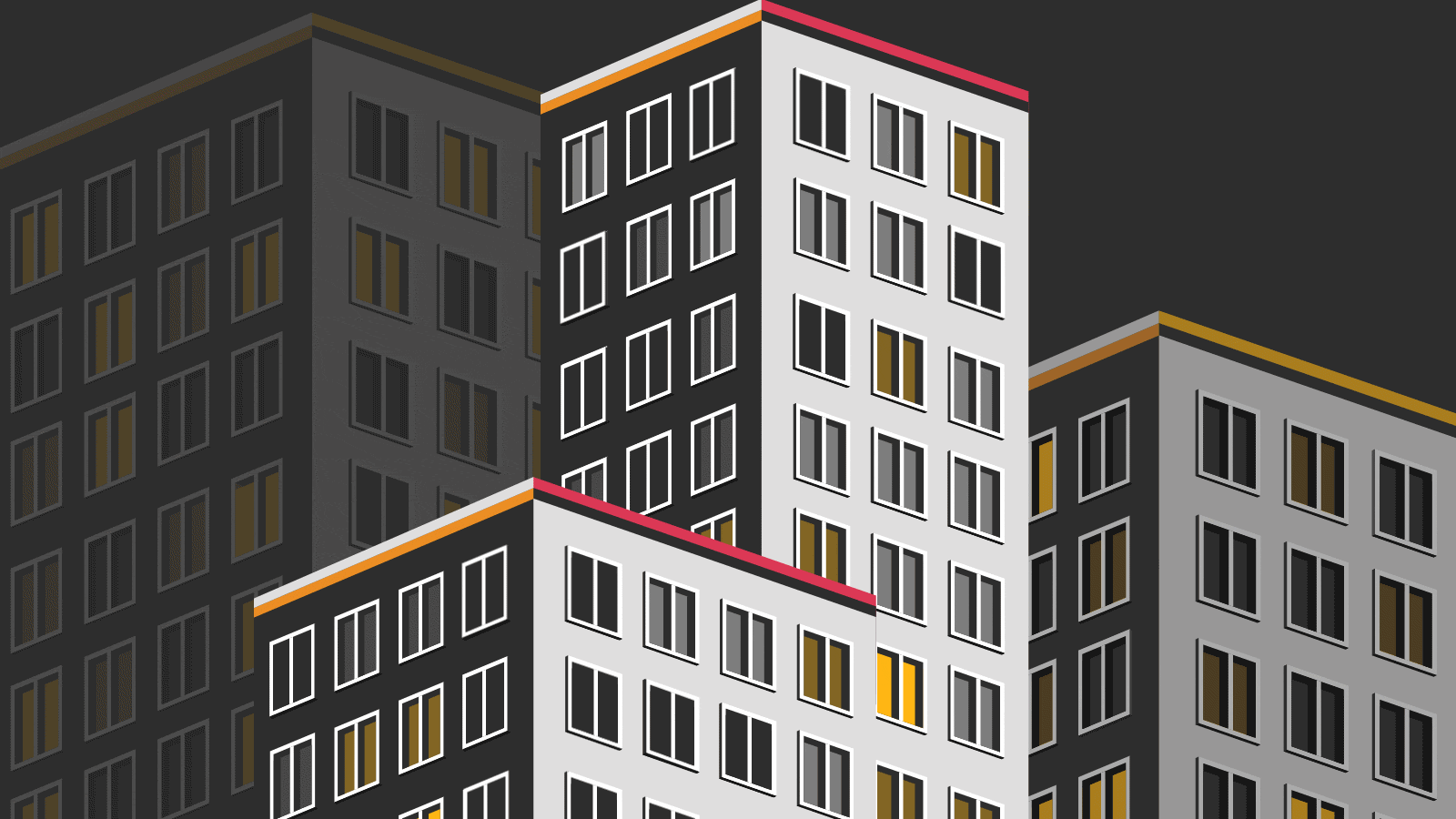The future of real estate will be shaped by local supply and demand dynamics. Home prices are expected to stabilize, while rental growth may vary between single-family and multifamily units.
As the housing market evolves, various trends will significantly influence its trajectory. Increased demand for single-family homes reflects shifting preferences for more space. Urban migration patterns also play a crucial role, with many people seeking suburban living due to remote work flexibility.
Additionally, sustainability and smart home technology are becoming vital factors for buyers. These elements, combined with fluctuating interest rates and economic conditions, create a dynamic real estate landscape. Understanding these trends is essential for investors, homeowners, and industry professionals alike, as they navigate the complexities of the housing market in the coming years.

Credit: uniquelyre.com
The Rise Of Smart Homes
The concept of smart homes is transforming the real estate market. Homeowners now seek technology that enhances comfort, security, and efficiency. Smart homes integrate various devices to create a connected living experience. This trend is rapidly gaining popularity among buyers and builders alike.
Energy Efficiency And Sustainability
Smart homes prioritize energy efficiency. Homeowners save money while reducing their carbon footprint. Here are some key features:
- Smart Thermostats: Adjust temperature based on habits.
- Energy Monitoring Systems: Track energy consumption in real-time.
- Smart Lighting: Automatically turns off when not needed.
These technologies contribute to sustainability. Homeowners value homes that support eco-friendly living. As energy costs rise, energy-efficient homes gain more appeal.
Integration Of Ai And Iot
The integration of Artificial Intelligence (AI) and Internet of Things (IoT) is reshaping smart homes. Devices communicate seamlessly for improved efficiency.
Key benefits include:
- Enhanced Security: Smart cameras and doorbells provide real-time alerts.
- Home Automation: Control devices remotely via smartphone apps.
- Predictive Maintenance: AI can alert homeowners of potential issues.
This technology enhances the convenience of daily life. Buyers are increasingly seeking homes with these features. Smart homes are not just a trend; they represent the future of living.

Credit: charlestonempireproperties.com
Shift Towards Co-living Spaces
The real estate landscape is changing rapidly. One significant trend is the shift towards co-living spaces. These shared living environments offer more than just a roof over one’s head. They provide community, affordability, and flexibility. As housing prices soar, co-living is becoming a preferred choice for many, especially young adults.
Benefits For Millennials And Gen Z
Co-living spaces cater to the needs of Millennials and Gen Z. Here are some key benefits:
- Affordability: Lower rent costs compared to traditional apartments.
- Community: Opportunities to meet and bond with like-minded individuals.
- Flexibility: Shorter lease terms and furnished options.
- Networking: Build connections for personal and professional growth.
These benefits make co-living appealing. Young adults value experiences over possessions. They seek environments that enhance their lifestyles. Co-living offers just that.
Impact On Urban Development
The rise of co-living spaces influences urban development significantly. Cities are adapting to these new living arrangements. Here’s how:
| Impact | Description |
|---|---|
| Increased Density | More people living in smaller areas, promoting efficient land use. |
| Mixed-Use Developments | Integration of residential, commercial, and recreational spaces. |
| Revitalized Neighborhoods | Older areas receive upgrades, attracting new residents. |
| Sustainable Practices | Emphasis on eco-friendly designs and communal resources. |
Urban planners must consider these shifts. Co-living spaces will shape future city designs. They promote community living while addressing housing shortages.
Sustainable And Green Building Practices
Sustainable and green building practices are transforming the real estate market. These methods focus on reducing environmental impact and promoting energy efficiency. Homebuyers increasingly seek eco-friendly homes. Builders respond with innovative designs and materials.
Leed Certification
LEED, or Leadership in Energy and Environmental Design, is a globally recognized rating system. It promotes sustainable building practices. Homes that achieve LEED certification meet strict environmental standards. This certification can increase a property’s value and appeal.
- Reduces energy consumption
- Improves indoor air quality
- Conserves water
- Encourages sustainable site development
Many buyers look for LEED-certified homes. These homes often have lower utility bills and a smaller carbon footprint. Investing in LEED certification can lead to significant long-term savings.
Innovative Materials And Techniques
New materials and building techniques enhance sustainability. Builders use recycled, renewable, and non-toxic materials. These choices reduce waste and promote healthier living environments.
| Material | Benefits |
|---|---|
| Recycled Steel | Strong, durable, and reduces landfill waste |
| Reclaimed Wood | Unique appearance and reduces deforestation |
| Insulated Concrete Forms | Energy-efficient and resistant to extreme weather |
Advanced techniques like 3D printing are also emerging. These methods can lower costs and speed up construction. Builders focus on energy-efficient designs to minimize energy loss.
Homebuyers are increasingly attracted to these innovative homes. Green building practices not only benefit the planet but also enhance quality of life.

Credit: www.pwc.com
The Evolution Of Work-from-home
The work-from-home trend has transformed how we view our living spaces. Remote work is no longer temporary; it is here to stay. This shift changes the demand for homes. People seek spaces that accommodate both work and life. The result? A new approach to real estate and living arrangements.
Designing For Home Offices
As more individuals work from home, the need for dedicated home office spaces increases. Here are key elements to consider when designing a home office:
- Natural Light: Choose spaces with large windows.
- Ergonomic Furniture: Invest in comfortable chairs and desks.
- Quiet Areas: Select rooms away from noise.
- Technology Needs: Ensure strong internet connectivity.
Homeowners are now looking for specific features:
| Feature | Importance Level |
|---|---|
| Dedicated Office Space | High |
| Soundproofing | Medium |
| Storage Solutions | Medium |
| Multi-purpose Rooms | High |
Real Estate In Suburbs Vs. Cities
The rise of remote work has shifted preferences from urban to suburban living. Many people prefer the quieter lifestyle of suburbs. They enjoy larger homes and more outdoor space.
Key differences between suburbs and cities include:
- Space: Suburban homes are often larger.
- Price: Suburbs usually offer lower prices.
- Commute: City dwellers face longer commutes.
- Community: Suburbs offer a sense of community.
This trend will likely continue. More families seek space and comfort in their homes. The suburbs provide a perfect solution for many.
Technological Disruptions In Real Estate
The real estate market is experiencing rapid changes due to technology. New tools and innovations are shaping how buyers and sellers interact. These disruptions streamline processes and improve efficiency. Understanding these trends is vital for anyone involved in real estate.
Blockchain In Property Transactions
Blockchain technology is transforming property transactions. It offers a secure and transparent way to handle real estate deals. Here are some key benefits:
- Increased Security: Reduces fraud risks with encrypted data.
- Faster Transactions: Eliminates middlemen and speeds up processes.
- Lower Costs: Reduces fees associated with traditional methods.
Smart contracts are a significant part of this technology. They automatically execute agreements when conditions are met. This minimizes delays and errors.
| Feature | Traditional Method | Blockchain Method |
|---|---|---|
| Transaction Time | Days to weeks | Minutes to hours |
| Cost | High fees | Lower fees |
| Security | Moderate | High |
Virtual Reality Tours
Virtual reality (VR) is revolutionizing property viewing. It allows potential buyers to explore homes without visiting. This offers several advantages:
- Convenience: View properties anytime, anywhere.
- Enhanced Experience: Interact with properties in 3D.
- Time-Saving: Narrow down choices quickly.
Real estate agents can use VR to showcase multiple properties. This innovative approach attracts more buyers and speeds up sales.
Incorporating VR in marketing can lead to higher engagement. Buyers appreciate the immersive experience. It gives them a better feel for the property.
Housing Market Dynamics
The housing market is constantly changing. Understanding these dynamics is essential for buyers, sellers, and investors. Key factors include supply and demand, price trends, and economic conditions. Each element plays a crucial role in shaping the market’s future.
Supply And Demand Challenges
Supply and demand are the backbone of the housing market. Current challenges impact home availability and buyer interest:
- Low Inventory: Many areas face a shortage of homes.
- High Demand: More people want to buy, pushing prices up.
- Construction Delays: Supply chain issues slow down new builds.
These challenges lead to increased competition. Buyers often find themselves in bidding wars. This scenario drives home prices higher.
Predicting Price Trends
Predicting price trends requires analyzing various factors. Key indicators include:
| Indicator | Impact on Prices |
|---|---|
| Interest Rates | Higher rates can decrease buyer purchasing power. |
| Economic Growth | Stronger economies boost buyer confidence and prices. |
| Population Growth | Increased population leads to higher demand for housing. |
Experts often use these indicators to forecast future prices. Understanding these trends helps buyers and sellers make informed decisions.
Investment Strategies For The Future
The real estate market is evolving. Investors must adapt to new trends. Understanding these trends is crucial for making smart investments. This section explores key strategies for future success.
Single-family Vs. Multifamily Units
Choosing between single-family and multifamily units impacts returns. Each type has unique benefits.
| Type of Unit | Benefits | Challenges |
|---|---|---|
| Single-Family Units |
|
|
| Multifamily Units |
|
|
Emerging Markets To Watch
Investors should keep an eye on emerging markets. These areas show potential for growth and high returns.
- Austin, Texas – Tech hub with rising demand.
- Nashville, Tennessee – Booming economy and culture.
- Boise, Idaho – Affordable living attracting newcomers.
- Charlotte, North Carolina – Financial center with job growth.
- Orlando, Florida – Tourism and population growth.
Investing in these markets can yield significant returns. Research local trends and demographics. Focus on areas with strong job growth. This strategy increases the chances of success.
Regulatory Changes And Their Impact
The real estate market is constantly evolving. Regulatory changes play a vital role in shaping this landscape. These changes influence home prices, housing availability, and investment opportunities. Understanding these regulations helps buyers, sellers, and investors navigate the market effectively.
Zoning Laws And Housing Affordability
Zoning laws directly affect housing affordability. They dictate how land can be used, which impacts housing supply.
- Restrictive zoning limits the types of homes that can be built.
- Higher density housing often faces zoning challenges.
- Mixed-use developments can increase housing options.
Many cities are revising zoning laws to tackle affordability. Here are some key changes:
| Change | Impact |
|---|---|
| Increased density allowances | More homes built in urban areas |
| Relaxation of single-family zoning | More affordable housing options |
| Streamlined permitting processes | Faster project completion |
These adjustments aim to enhance housing affordability and meet growing demand.
Government Incentives For Investors
Government incentives attract investors to the housing market. These incentives can stimulate new housing developments.
- Tax credits for affordable housing projects.
- Grants for renovating existing properties.
- Low-interest loans to encourage development.
Such incentives can lead to:
- Increased housing stock.
- Enhanced community development.
- Improved local economies.
Investors benefit from these programs while addressing housing shortages. As regulations evolve, opportunities will expand.
Frequently Asked Questions
What Is The Future Of Real Estate?
The future of real estate involves stable home prices due to limited supply. Rental growth may slow as new properties enter the market. Single-family homes will likely see faster rental increases compared to multifamily units. Market dynamics will vary based on local economic conditions and demand.
Is It A Buyers Or Sellers Market In 2024 In The Usa?
In 2024, the U. S. housing market is likely to be a seller’s market. Limited inventory and high demand will favor sellers. Home prices may stabilize, but local market conditions could vary. Buyers may face challenges due to continued affordability issues.
Will 2026 Be A Good Year To Buy A House?
Predicting the housing market for 2026 involves various factors. Current trends suggest potential price stabilization and improved affordability if mortgage rates decrease. Local market conditions will significantly impact buying opportunities. Researching your specific area will provide more accurate insights for your decision.
Should I Sell My House Now Or Wait Until 2025?
Deciding to sell now or wait until 2025 depends on your financial situation and market conditions. Current trends suggest home values may remain stable. Research local market forecasts for better insight. Consulting a real estate professional can help you make an informed choice.
Conclusion
The housing market is evolving rapidly. Emerging trends like technology integration, sustainability, and changing buyer preferences will shape future dynamics. Staying informed about these shifts is essential for buyers and investors alike. Embracing these trends can lead to smarter decisions and greater opportunities in real estate.
The future holds promise for those prepared to adapt.
